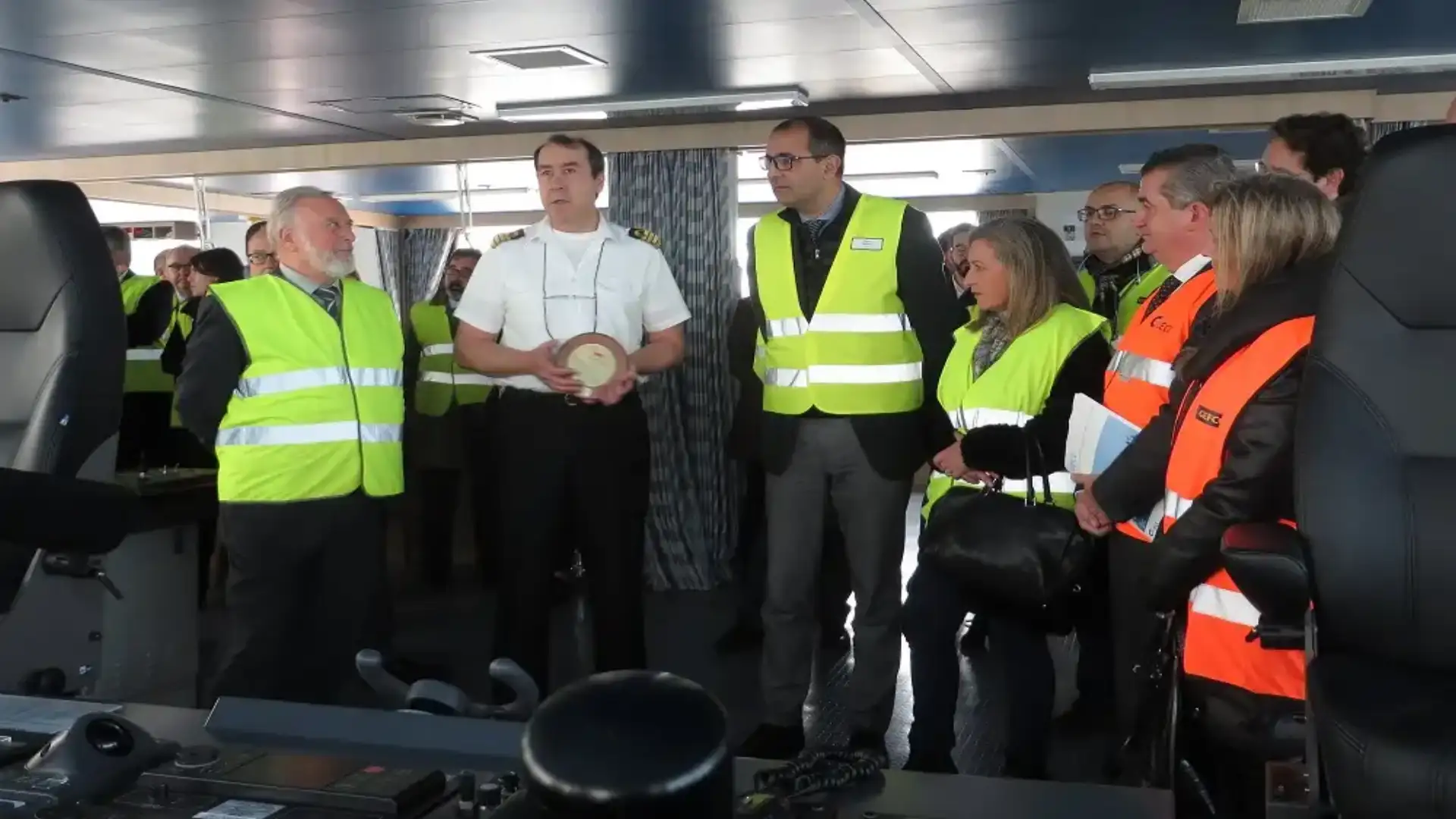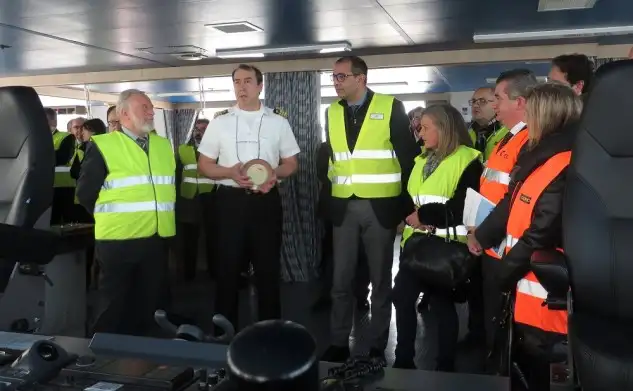
▪ First Spanish port of call for a LNG-powered ship
▪ First Spanish port of call for a LNG-powered ship

The scale of the "Auto Eco," belonging to the shipping company UECC, marks a milestone for the olive dársena, as it is the first time that a ship of these characteristics has been caught in Vigo. The ship will be logged every week on the olive dock within a regular line for the export of PSA vehicles. The scale of this ship reinforces the LNG strategy being carried out by the APV, in accordance with the philosophy of the use of clean fuels and expanding possible future collaborations.
Vigo is already part of a select group of ports in environmental matters, with a regular scale of a ship powered by Liquid Natural Gas (LNG). This has been announced by the President of the Harbour Authority of Vigo, Enrique César López Veiga, on the occasion of the inaugural scale of the largest roro of the world that uses this clean energy during its traverses. The scale of the "Auto Eco," belonging to the shipping company UECC, thus marks a milestone for the Viguese dársena, as it is the first time that a ship of these characteristics has taken on Vigo. According to the most responsible port after the traditional exchange of metopes with the ship's captain, during his stay in Vigo he will charge a total of 2,400 vehicles made in the Viguese plant of PSA Peugeot Citröen. From Santander, you will leave today Friday, about 7: 00 pm, heading for Zeebrugge. The ship will be logged every week on the olive dock within a regular line for the export of PSA vehicles.
Technical data
The "Auto Eco" is 181 meters long and 30 meters long. It was built by Nacks shipyards in Nantong, China. He's only been in service for a month. UECC baptized him in late November in Zeebrugge (Belgium), from where he left this week for Vigo. This is the first of the two twin vessels that UECC hired to comply with the rules on sulphur emissions in Northern Europe, which is a good sign of the international LNG projection. The "Auto Eco" is able to navigate 14 days in a row, although its engine allows it to use both LNG and diesel. In addition, it has the "Super 1A" ice certification required by Sweden and Finland, so it could extend covered waters up to 60 cm of ice. It is specifically designed for transit through the Baltic and other ice-prone areas. It belongs to the PCTC type (Pure Car and Truck Carrier), so that its 10 covers include cars, trucks and projects. It has capacity for approximately 4,000 cars and 6,000 m2 for heavy cargo.
© 2024 Nautica Digital Europe - www.nauticadigital.eu











